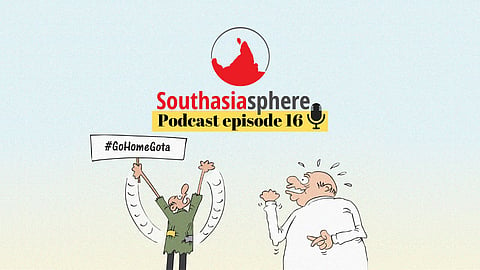Escalating crisis in Sri Lanka, local elections in Nepal, Film Southasia 2022, and more.
Southasiasphere is our monthly roundup of news events and analysis of regional affairs. If you are a member, you will automatically receive links to the new episodes in your inbox. If you are not yet a member, you can still get it for free by signing up here.
In this episode, we look at growing protests in Sri Lanka, their political implications, as well as the no-confidence motion against Imran Khan in Pakistan. In Around Southasia in 5 minutes, we talk about the termination of citizenship for high-profile dissidents by Myanmar's military regime, the tragic resurgence of communal violence in India, Nepal's upcoming local government elections, and more.
Plus in our culture section Bookmarked, we discuss the 25th edition of Film Southasia held in Lalitpur, Nepal, plus our monthly recommendations for reading and watching.

